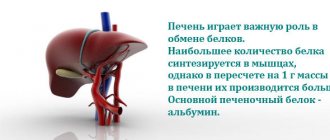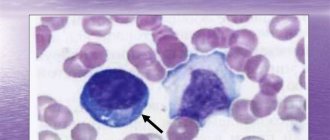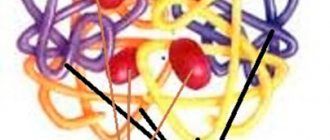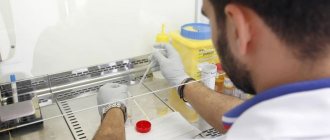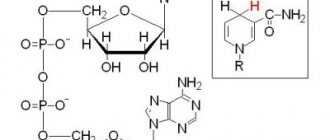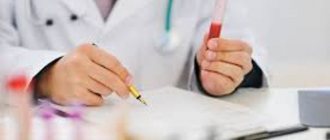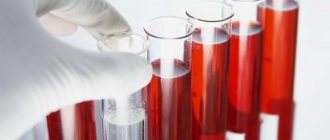Traditionally, the most common infectious and inflammatory disease of the upper respiratory tract is bronchitis. Laboratory tests for bronchitis play a fundamentally important role. They provide more accurate information about the state of health and allow you to determine the activity of the inflammatory process, as well as eliminate possible complications. Advanced forms of the disease can lead to severe complications from all organs and systems of the body. Therefore, timely diagnosis and properly selected treatment increase the recovery rate.
Changes in blood composition during bronchitis
Why do a blood test? This question naturally arises in the patient. As it turns out, with bronchitis the composition of the blood changes, which can only be observed in laboratory conditions. A person feels changes in his well-being.
First of all, the level of leukocytes and the erythrocyte sedimentation rate (ESR) are checked - these indicators are the very first ones that respond to the appearance of infection or inflammatory processes in the body. Their number is increasing significantly. Leukocytes, which are the most important agents of the immune system in the fight against various viruses and bacteria, react first. The body synthesizes them in large quantities so that they intensively fight pathological microorganisms.
An infection entering the body causes a response in leukocytes. Blood cells want to free themselves from foreign organisms, pushing them out.
A general blood test is also prescribed in order to determine treatment. The patient may be allergic to a certain component of the medicine. To rule this out, tests need to be carried out. Before giving antibiotics, the doctor must make sure that the body will adequately respond to a particular drug.
The concentration of the drug that is prescribed to the patient is also important. It can be determined by the composition of the blood observed during bronchitis. There is a big difference between expectorants and strong antibiotics. To correctly decide on medications, you need to know exactly what is happening in the body.
go to top
Sputum
Sputum analysis is an informative laboratory test, with the help of which several groups of indicators are determined:
- Macroscopic indicators, which include color, smell, transparency, volume.
- Microscopic indicators that are determined during examination under a microscope are the estimated number of different cells (various types of leukocytes, epithelial cells), the presence of pathological elements (Curshman spirals, Charcot-Leyden crystals), the presence of microbes.
If necessary, additional bacteriological culture is carried out. The collected sputum is applied to a special nutrient medium (whey, blood, meat-extract agar). When bacterial microorganisms are present, colonies grow.
Identification of pathogens is carried out by cultural, morphological, biochemical and antigenic properties. The study includes the identification of isolated microorganisms to modern antibiotics. This allows you to select the optimal etiotropic therapy aimed at destroying the causative agents of the infectious process.
Types of sputum for bronchitis
Indicators of sputum analysis for bronchitis depend on the form of inflammatory pathology:
- Bacterial bronchitis - sputum has a yellow or yellow-green color, a moderately viscous consistency, and an unpleasant odor (putrefactive in severe cases of the infectious process). Microscopy reveals a large number of leukocytes (neutrophils, alveolar macrophages), bacteria, and epithelial cells of the mucous membrane. With the development of a purulent process, leukocytes occupy the entire field of view under a microscope, while other elements cannot be seen.
- Viral bronchitis - sputum is released in a small volume, it is colorless, transparent, and has a liquid consistency. Under a microscope, a small number of epithelial cells of the mucous membrane and leukocytes (mainly lymphocytes) are determined.
- Allergic bronchitis - a coughing attack against the background of an allergic reaction is accompanied by the appearance of a small amount of viscous, transparent, “glassy” sputum. Microscopic examination reveals eosinophils (immunocompetent cells that produce mediators of the allergic reaction, which include histamine), Charcot-Leyden crystals (the contents of eosinophils, which crystallize after leaving the cells), Kurshman spirals (strands of dense mucus that are twisted into a spiral , they appear after a coughing attack).
Expert opinion
Anna Sandalova
Pulmonologist, doctor of the highest category
Ask a Question
Each form of bronchitis is accompanied by characteristic changes. In doubtful cases, the doctor prescribes additional tests to reliably establish the cause of the pathology. These include PCR, ELISA, virological studies, and allergy tests.
How to decipher the results of a blood test?
When taking a blood test, many indicators are checked. The results are deciphered by a doctor who pays attention to the following indicators:
- Red blood cells are cells produced by bone tissue. They are also called red blood cells and RBC cells. They are responsible for the transport of oxygen throughout the body, as well as oxidation processes. Red blood cells regulate water-salt, acid-base and ion balances in the blood. They are also involved in coordinating coagulation functions.
If the number of red blood cells is increased in the body, this indicates a lack of fluid, which causes the blood to thicken. This can happen due to vomiting, diarrhea, fever, and sweating.
A low number of red blood cells indicates anemia and a lack of vitamin B in the body.
- Leukocytes. The main function of these cells is to fight foreign bodies. That is why their number changes when various infections enter the body. The state of the immune system can be determined by their number. Some of them fight bacteria, others fight viruses, others fight parasites, and others fight allergens.
The number of white blood cells increases when an infection enters the body. However, to understand what exactly the body is struggling with, the doctor studies the leukocyte formula.
- Platelets. These anucleated cells are involved in the formation of blood clots to stop bleeding from various injuries. If an increased amount of them is observed in the blood, then we are talking about the presence of inflammatory processes. A decrease in platelets in the blood indicates autoimmune diseases and anemia.
- Hemoglobin. These are red iron-containing cells that perform the function of transporting oxygen from the respiratory organs to the tissues and carbon dioxide from the tissues to the respiratory organs. With respiratory diseases, the hemoglobin level increases by 20 or more units. Such indicators are often observed with bronchitis.
- Blood color index. This component shows the ratio of hemoglobin to red blood cells. Helps determine the type of anemia. A high rate indicates heart failure, diseases of the respiratory system (in particular, the lungs).
go to top
ESR - what does this indicator indicate?
ESR is an abbreviation for the indicator that the doctor is trying to identify - the erythrocyte sedimentation rate. What is he pointing to? On the development of various pathologies in the body, which can develop both before the onset of symptoms and during an asymptomatic disease. ESR varies significantly in various inflammatory processes and quickly responds to various deviations.
According to ESR readings, you can identify:
- Causes of the disease and its location.
- Determine the body's response to treatment.
- Identify diseases that are asymptomatic.
Normal readings are:
- For men, ESR is 1-10 mm/hour.
- For children, ESR is up to 17 mm/hour.
- For women, ESR is 2-15 mm/hour.
A deviation from the norm of more than 100 mm/hour indicates infectious processes in the body that occur with pneumonia, bronchitis, ARVI, tuberculosis, etc.
The ESR increases even before the patient begins to complain of any symptoms. With bronchitis, ESR increases several times. This is explained by the fact that cell synthesis occurs faster than usual, as does the process of their decay.
go to top
Effective treatment
Treatment of bronchitis should be multifaceted. That is, using not only medications in the form of antibiotics, but also local ones. In order to choose the right drugs, it is necessary to properly identify the cause of the disease, that is, the virus. First of all, this concerns children, because their body is most sensitive and prone to the slightest reactions. Therefore, if the first symptoms of the disease appear, it is best to immediately consult a doctor and undergo all the necessary tests in order to accurately identify the cause of bronchial inflammation.
After recovery, doctors, as a rule, recommend protecting yourself as much as possible from all negative influences so that the disease does not turn from an acute form into a chronic one.
- Author: Boris
How did I become a doctor? Quite a difficult question... If you think about it, there was no choice. I was born into the family of a resuscitation doctor, and every day at dinner I heard my father’s story about how his day went. As a child, this all seemed fantastic, beyond reality. Rate this article:
- 5
- 4
- 3
- 2
- 1
(0 votes, average: 0 out of 5)
Share with your friends!
How to prepare for a blood test?
A blood test is ordered by a doctor who tries to determine the diagnosis, course of the disease and other characteristics. He must also figure out how to cure the disease. All this will help establish a general blood test, for which you should properly prepare.
To ensure that the indicators are correct, several rules should be followed before carrying out the blood donation procedure:
- Avoid drinking alcohol, juices, coffee, tea and fatty foods.
- Do not overexert yourself physically (exclude running, swimming, squats, pull-ups, etc.).
- Donate blood on an empty stomach, that is, after the last meal within 8 hours before the procedure.
- Do not have sex without using contraceptives, so as not to provoke the immune system to produce cells.
The blood donation procedure is carried out in the morning so that the person can undergo it on an empty stomach. All measures should be observed the day before (maximum 3 days before the test).
If you follow all these rules, you can avoid distortion of blood counts. Toxic substances are found in various drinks and fats of plant and animal origin. And physical activity increases the number of red and white blood cells in the blood. Red blood cells saturate the blood with oxygen, and white blood cells eliminate various bruises and injuries that inevitably happen when playing sports.
Also, a general blood test can be prescribed for the following processes:
- With a long course of the disease.
- For various inflammatory processes.
- To clarify or confirm the diagnosis.
- With a prolonged cough that removes a large amount of mucus.
- If pneumonia is suspected.
- In the absence of recovery after therapy.
- To identify the nature and nature of the disease.
- To detect infection.
go to top
Elevated leukocytes and ESR after bronchitis
Hello! Child 2.5 years old, girl, 11.5 kg, 91 cm. Last year I had ARVI a couple of times. This year we went to the garden in October, and since then I have been sick almost all the time. She fell ill on November 12 - a severe cough, a temperature of up to 39 degrees, which either dropped to 37.5 on its own, then rose again.
Blood test 13.11 Leukocytes 8.2 (5-12) Erythrocytes 4.18 (3.7-4.9) Hemoglobin 113 (110-140) Platelets 274 (160-390) Neutrophils 4.26 (1.5-8.5) Lymphocytes 2.79 (1.5-7) Monocytes 0.8 (0- 0- 0.8) Eosinophils 0.34 (0-0.7) Basophils 0.033 (0-0.1) Band 8% (0.5-5)
Segmented 44% (25-60) Lymphocytes 34% (25-60) Monocytes 10% (2-10) Eosinophils 4% (0.5-7) Basophils 0% (0-1)
ESR 51 (4-12)
In the evening of 11/13 we started give augmentin. 14.11 severe dry cough, fever does not subside, the child does not eat or drink, we are going to the hospital with suspected pneumonia - the doctor seemed to have wheezing on the left side. At the hospital, pneumonia was not confirmed by X-ray. Diagnosis: ARVI, bronchitis. Treatment: Sultasin injections, a couple of droppers with saline and glucose because she refused to drink, one injection of dexamethasone “to prevent pulmonary edema from the dropper,” inhalations with Berodual, Ambroxol.
Tests from the hospital: 11/14 Leukocytes 6.9 (5.5-15.5) Red blood cells 4.13 (3.5-4.5) Hemoglobin 114 (110-140) Platelets 342 (160-390) Lymphocytes 37%. (26-60) Neutrophils 49.2% (25.5-65%) Band 5% (0-6) Segmented 46% (25.5-65) Monocytes 11% (2-12) Eosinophils 1% (0.5-6) Lymphocytes 2.6 (1.3 -7.2) Neutrophils 3.4 (1.3-7.8) ESR 28 (2-15)
19.11 Leukocytes 9.5 (5.5-15.5) Red blood cells 4.07 (3.5-4.5) Hemoglobin 114 (110-140) Platelets 531 (160-390) Lymphocytes 61.1%. (26-60) Neutrophils 32.4% (25.5-65%) Band 4% (0-6) Segmented 28% (25.5-65) Monocytes 5% (2-12) Eosinophils 6% (0.5-6) Lymphocytes 5.8 (1.3 -7.2) Neutrophils 3.1 (1.3-7.8) ESR 36 (2-15)
The urine contained 250 erythrocytes (I don’t understand in what units), 0.25 hl protein, 15 ketones, 1-2 leukocytes. The doctor said it was fine, she didn’t wash the child well.
She was discharged on November 20 in good condition, with occasional coughing. Now he also coughs sometimes and has a hoarse voice.
Analysis 23.11. Leukocytes 16 (5-12)
Erythrocytes 4.18 (3.7-4.9) Hemoglobin 111 (110-140)
Platelets 529 (160-390) Neutrophils 9.12 (1.5-8.5)
Lymphocytes 5.28 (1.5-7) Monocytes 1.3 (0-0.8) Eosinophils 0.16 (0-0.7) Base Philos 0.160 (0-0.1) Band 3% (0.5-5) Segmented 54% (25-60) Lymphocytes 33% (25-60) Monocytes 8% (2-10) Eosinophils 1% (0.5-7) Basophils 1% ( 0-1)
ESR 33 (4-12)
Urine was also retaken. Protein 3 (0-14), traces of red blood cells, urobilinogen 0 (0.2-1)
What is the reason for the increase in leukocytes and ESR
? What should I do? Are such changes in urine normal?
Sources used: forums.rusmedserv.com
Forecast
A blood test is a diagnostic procedure that allows you to clarify whether a person has a bronchial disease, determine the nature and find out methods of its treatment. The prognosis becomes favorable if all measures are taken by a doctor who knows the norms in blood readings for bronchitis.
Donating blood does not take much time, but it provides a lot of useful information about a person’s health. By donating a little blood from your finger, you can begin your treatment and recover quickly by following your doctor’s recommendations.

